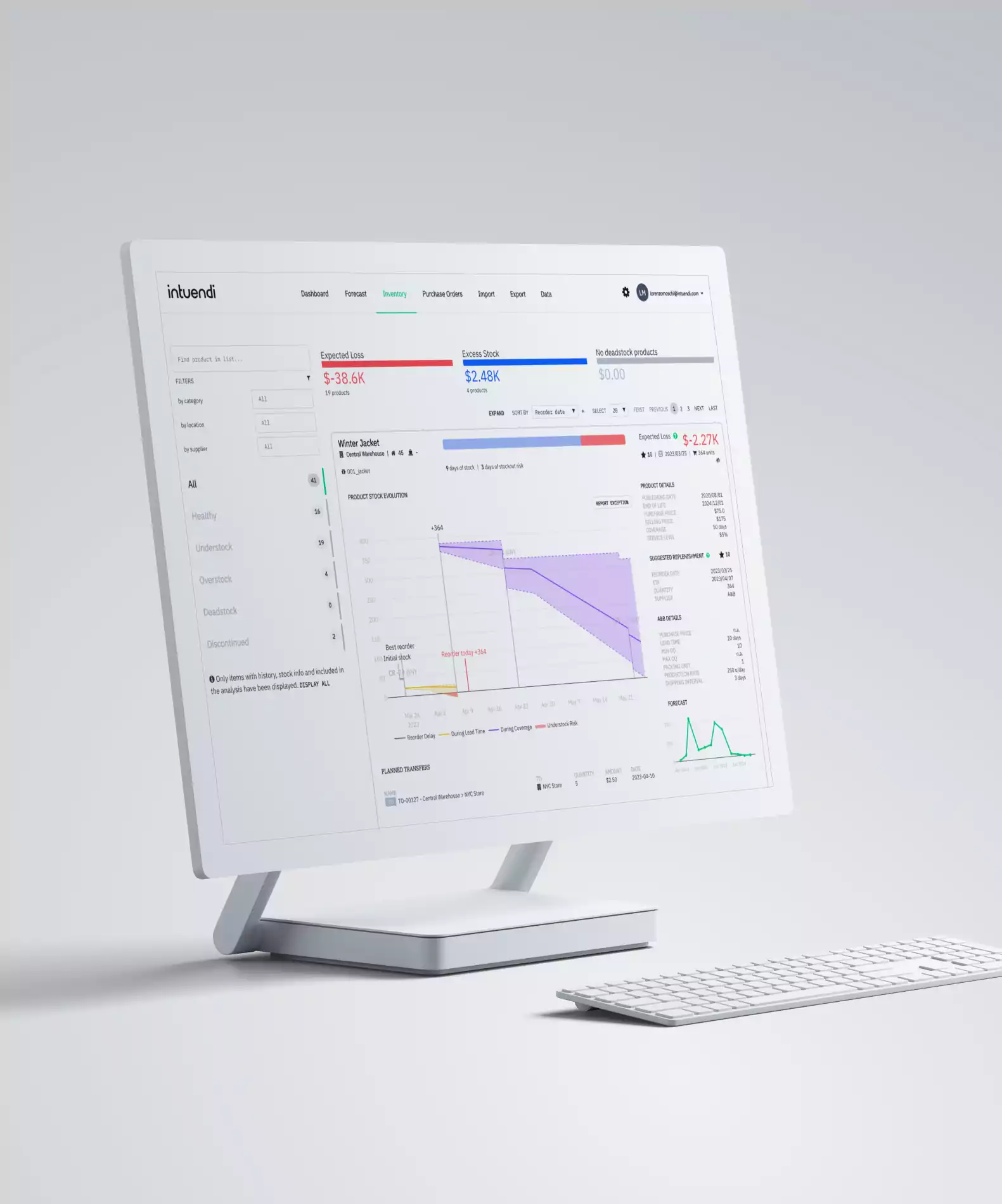Inventory management goes above and beyond packing and labelling stock – it is ensuring that your warehouse is functional at an optimal levels at all times, allowing your company to save on costs and create a culture of efficiency and happy customers. This article will be looking at the ins and outs of inventory management, and why it is so necessary for the smooth-running of business operations.
What is Inventory Management?
On one hand, inventory management is very much sorting out one’s warehouse including labelling, sorting and packing all inventory. However, the art of inventory management delves much deeper than this, bearing great responsibilities and even greater consequences. Inventory management is the process of handling all forms of inventory, from the ordering phase, to the eventual selling of inventory. This includes storage, usage, raw material processing, and warehousing of stock. It helps companies identify how much stock is available, and when more should be ordered to ensure that there is always available inventory to sell to consumers.
How to Manage Inventory
Now that you have learnt about the importance of inventory management, here are 5 tips for effective inventory management!
- Planning Inventory Requirements. Once you have calculated the optimal level of inventory needed to meet customer demand, you are able to plan your inventory requirements. These requirements will be informed by demand forecasting, historical data, and market trend analysis, as well as other factors that will help provide an accurate projection of inventory needs. The goal is to ensure that enough inventory is available to fulfill orders without reaching excessive stock-outs or overstocking.
- Procuring Inventory. Once the inventory requirements have been determined, the next step is to acquire the necessary inventory for business operations. This includes all steps towards procuring the inventory. This might include placing orders with suppliers or manufacturers, negotiating prices and terms, and organizing and ensuring the timely delivery of raw materials or the entire product. Inventory management is optimized at this step once your company has found reliable suppliers who are able to deliver on time, and are open to negotiating rates and prices. It is equally imperative that this step sees optimized order quantities and lead times to avoid unnecessary loss of costs and disruptions, by using order management software or tools.
- Storing and Organising Inventory. In any field globally, the thorough and continuous organisation will always make the work easier, quicker, and more efficient, and it is no different when it comes to inventory management. Inventory management thrives off the proper storage and organisation of inventory. It calls for determining the appropriate storage facilities, arranging inventory in a logical and accessible manner, and implementing effective inventory control measures. Labeling, barcoding, and the use of inventory optimization software all come into play during this step, with the aim of minimizing damage, spoilage, or loss of inventory.
- Tracking Inventory Levels and Movements. Part of inventory management is knowing how much inventory is available, and where it is. It is, therefore, crucial to continuously monitor and track inventory levels and movements to maintain control and visibility of stock. Inventory records need constant updating during this step to allow for the identification of discrepancies, stock-outs, or overstocking, and to enable timely reordering or replenishment.
- Analysing Inventory Data. Analyzing inventory data involves examining various performance metrics and key performance indicators to gain insights and make informed decisions. This includes analyzing inventory turnover, carrying costs, lead times, stock-outs, and other relevant data points. By studying inventory data, your company is able to identify trends and patterns, as well as areas in need of improvement. Having access to this data additionally allows for the optimization of inventory levels, providing your business the opportunity to streamline its operations and to make strategic decisions based on the analyses.
Inventory Management Techniques
Some of our favorite inventory management techniques here at Intuendi include ABC analysis, JIT inventory, EOQ, and different forecasting methods. Let us have a look at how each of them work, and hopefully, you will be able to adopt them into the inventory management of your own company!
ABC Analysis categorizes certain inventory items at different values and levels of importance. Category A includes the higher-value inventory, with each category of inventory having a smaller value and level of importance. Thus Category A will have the highest level of inventory value and Category C will have the lowest.
The Just-in-time (JIT) inventory management method aims to reduce wastage by keeping only the inventory that is needed to produce and sell products. This helps save on costs such as storage and holding costs, and prevents running into issues of excess stock. A key facet of the JIT inventory management method is efficient coordination with suppliers and strong communication between all departments.
Economic Order Quantity (EOQ) is a formula-based technique used to determine the optimal order quantity that minimizes total inventory costs and takes both ordering and holding costs into consideration. The third key factor taken into consideration using the EOQ method is the demand rate of the inventory.
There are various forecasting methods to predict future demand for inventory items, allowing businesses to plan the amount of inventory needed around the projections and forecasts provided. Some techniques might include time series analysis, market research, statistical models, and collaborative planning between suppliers and stakeholders. Intuendi provides a best in class demand forecasting tool.
Types of Inventory
While it is important to know how to properly manage one’s inventory, the type of inventory will often inform the management process and option. Let us look at a few different types of inventory and their optimal management strategies, techniques and methods.
Raw Materials: Due to their quick-spoiling nature, raw materials often need strong and strict planning and communication between warehouses, suppliers and transporters with the shortest lead times possible. Accurate demand forecasting will additionally prevent raw materials from spoiling or becoming waste. Additionally, to ensure that no revenue is lost to spoiled raw materials, multiple quality control strategies should be put into place.
Work-in-Progress (WIP): This type of inventory consists of different materials that are waiting to be assembled to be sold. Real-time tracking of inventory at each production phase and continuous communication through all the necessary channels at each phase additionally provides constant insight into how long the product will take to complete, and therefore allows for effective production planning thereafter.
Finished Goods: Already finished products call for accurate demand forecasting to predict consumer demand and inventory quantities, as well as a safety stock allowance, should the products be in high demand. Implementing efficient order processing and fulfillment systems additionally allows for minimized lead times and improved customer satisfaction. Managing finished goods according to their seasonal demand is also an imperative inventory management strategy for these types of products.
Maintenance, Repair, and Operations (MRO) Inventory: Referring to supplies, spare parts, and other materials needed for repair and maintenance, MRO inventory should initially be categorized by usage frequency in order to determine how often routine maintenance is necessary for these items. Regular audits and standardization of the products used will allow for a more accurate and thorough prediction of when and how this inventory will be used, thus informing the quantity and time allocation of the following MRO inventory order.
Goods in Transit: Goods in transit need constant tracking and visibility to ensure their safe arrival at warehouses or retail outlets. Along with the aforementioned, strong and reliable communication channels between suppliers, transporters, stakeholders, and retail operators will increase the chances of the stock being where it needs to be at all time, with constantly informed key role-players. Contingency planning and safety stock can be used if you run into an issue with the goods in transit, with all documentation and compliance codes being signed and followed.
The 80/20 Rule in Inventory Management
The Pareto principle, or 80/20 rule in inventory management states that roughly 80% of the effects arise from 20% of the causes, suggesting that a significant portion of the value or impact is derived from a small fraction of the inventory items. By identifying and focusing on the critical subset of the top-performing and high-value inventory items, businesses can optimize their inventory management efforts and resources accordingly, and thus, more effectively. This can be achieved through the analyzing of sales data, customer demand patterns, and other relevant metrics. This allows businesses to prioritize their efforts of managing and optimizing these high-impact items while adopting a more streamlined approached for the remaining inventory. The 80/20 principle has a significant impact on sales and inventory prioritization. By focusing on the vital few inventory items that drive the majority of sales, businesses can allocate resources more efficiently, ensuring the availability of high-demand products while minimizing the risk of stock-outs.
Benefits and Objectives of Inventory Management
As discussed throughout the article, strategic and efficient inventory management brings with it many benefits. Let us home in on some of the more notable advantages brought about by effective and optimized inventory management:
Optimization of stock levels: Maintaining the right balance of inventory to meet customer demand while minimising holding costs is brought about by strong inventory management measures and accurate forecasting to avoid excessive or insufficient stock levels. Businesses are given a larger opportunity to meet customer demand with an optimised level of stock.
Streamlining of operations: This benefit involves improving the efficiency of inventory-related processes: order processing, supply chain coordination, reducing lead times, and eliminating bottlenecks. Streamlined operations bring about enhanced productivity, reduced costs, and a smoother flow of inventory throughout the supply chain.
Enhancement of customer satisfaction: A point mentioned in almost every Intuendi article, as it is one that lies in the heart of our company. By having the right products available when customers need them, businesses are able to enhance customer satisfaction. Minimized stock-outs, timely order fulfillment, and accurate product delivery are all results of effective inventory management, which all bring about a happy and satisfied customer. And remember, a satisfied customer is more likely to become a repeat customer!
Inventory Management Systems and Software
Inventory management software and systems are tools used by businesses to track, manage, and control their inventory levels. It is not uncommon for technology to be used within inventory management systems, as this helps to reduce the risk of human error and automate certain processes at an impressive rate. Above this, technological systems also provide real-time tracking of inventory levels, as well as certain inventory analytics for efficient inventory management.

Because of its multi-faceted nature, software systems are able to perform many roles at once, such as demand forecasting, inventory visibility, order management, reorder point calculation, reporting analytics, and integration capabilities, all allowing for more streamlined and optimized inventory management.
Best Practices in Inventory Management
Next time you question the need to invest in inventory management tools, software, and systems, let this article serve as a reminder about all the benefits that optimized inventory management brings with it. It provides a constant balance between supply and demand through regular monitoring and analysis of inventory data, accurate demand forecasting, and the optimization of reorder points and lead times. Leveraging automated inventory control systems and implementing effective supplier management strategies further enhances the efficiency and accuracy of inventory management processes. By incorporating these practices, businesses can reduce costs, minimize stock-outs and excessive inventory situations, improve customer satisfaction, and maintain a competitive edge in the market.






